Wednesday, April 22, 2009
The man who cycles through glass walls part 3
Last year I published two blog posts (here and here) about Nico Hogg's amazing documentation of London via his camera. I left some breathing space between those two and this, the final installment in the interview.
The five months between the first post and now hasn't dimmed my awe for his shots and the journey that leads him to them. In truth, as incredible images continue to appear on his Flickr stream, it makes me think this series might never end. But for now, here are the last shots and thoughts, grouped into loose themes.
TRANSPORT
B: "Bricked 309 bus, Bartlett Park." Can you tell us the full story here?
N: "We were heading off the Lansbury Estate, going past Bartlett Park when a couple of kids, maybe 11 or 12 years old eyed up the bus from a bush behind the road with excited expressions. One of them raised an arm and the next thing I did was turn my head away, because I knew what was coming next and I didn't fancy a face full of broken glass!! Thud, bang. One shattered window, kids running off.
The driver took the bus on a bit further to get out of the conflict zone and pulled up. One kid on the bus got a bit of glass stuck in his neck and his mum went ballistic, ranting that she knew "the little fuckers". Never had that happen to a bus I was on so close to town before, but terrorising buses is an art form on the outlying estates..."
B: "Stonebridge Park Station" - while this tube shot comes from one of the rougher parts of London, it reminds me what a communal and shared experience transport is in London. The tube seems to out-price some of the lowest earners, but the overland and busses still unite everyone...
N: "Definitely. Comparing the overland to the underground, there isn't the blanket presence of ticket gates and staff to make the railway feel like an artificial, protected safe zone, so to me it just an extension of the street. Anyone can walk onto a train, ticket or not if they really wanted to. The same interactions, some pleasant, some not, the same feelings of risk.
And a lot of the overland really does unite everyone – the North London Line going from wealthy Richmond to Harlesden, through Hampstead to Camden, Highbury, then Dalston, Hackney, Stratford. Halfway round London for a pound or two, all different people squashed up together in those run down old purple trains. Night buses are the same – half the cabs disappear, the tubes and trains stop, and everyone's thrown onto the party bus. I fell asleep on one on my way to Hammersmith one night, surrounded by people coming back from the clubs. When I woke up again I was a few minutes from Heathrow, and the bus was full of bleary-eyed workers heading in for a 5am shift at the Airport! At some point in that time I was asleep they were sharing the same space..."
GRAF/TEXT
B: "Ponders Endz." How do you feel about grime? Are you aware of the micro-local identity issues that litter the genre...
N: Mixed. I'm not sure how I regard it in my head. For me it's very fluid, hard to pin down, my mind is trying to whack a cloud of gnats with a tree branch. It's definitely a much leaner, angrier London within a London, but finding the outside borders is no more clear cut, even if it has a fairly well defined 'middle'.
That vitriolic element to grime mcing impresses me, it can be quite sharp, but I find it can get a bit blunt and clumsy too. Overall, I prefer an instrumental noise to a string of vocals. I see the appeal of it, there are shards of a dark and sometimes cruel sense of humour that comes through in a lot of grime music that I love.
That predates grime, but it has found a well-lubricated conduit through the lyrics for me. Geography is an important part of it, this and that endz trampling over one another, but there's the transcendence of geographical lines too. Linking that up to grime as a bigger thing has always been hard for me, but that's down to a lack of knowledge on my part. The tensions of both are born of the same parentage. As an expression, or really, manifestation of a certain kind of urban reality it does it's job pretty succinctly, but I think about what would happen if the messages started reinforcing themselves on a big scale, self perpetuating, growing bigger than they are and spilling into something else, somewhere else and I worry. Or something. Arrgh, too easy to talk out of my arse on this! It's a stereotypical concern about grime, I think, and an outsiders one, but it's one I find myself unable to shake it off."
[As a quick aside here. Last year I enjoyed a piece by Matt Shadetek on Cam'ron and the issue of "No Snitching." A friend commented about what an out of control beast hip hop, and some of the values it perpetuates, has become. Given the obvious parallels between grime and hip hop, perhaps this what happens with the "scale" Nico worries about.]
B: "Wednesday: Enfield Highway." More micro-local identity tagging.
but then there's the overlay with what looks like BNP sticker. Do you know who the unitedbritish.corp/ are?
N: "Anything I could tell you would be thanks to Google! That part of Enfield, running along the Hertford Road has always been a strongly working class white area, but it's gradually becoming more and more popular for ethnic minority groups moving out from inner London. There are a few large estates too, and that extra sense of territory that comes with them. I see that up there, increasingly, it's a developing thing. I also see a lot more of this expressed territorialisation further out than closer to town, in any area notorious or not, graffiti on estates and bus shelters. I wonder, with those three things coming together, how that will evolve."
B: "Sunday afternoon: The lift." Racism: it's about. Even between different ethnic minority groups. In your trips to take shots, do see it a lot?
N: "Yeah, for years, from school onwards. There's more inter-ethnic group tension here any white vs other. Sometimes it's within different parts of what would be considered from the outside to be the same ethnic group – big troubles within the Somali groups in Woolwich and Plumstead, traditionally the elders kept a lid on trouble but they're losing the battle, it's a community that has come close to the edge of tearing itself to shreds from the inside. But it's worth distinguishing between barefaced racism and another issue, the settled population vs new arrivals.
People from half the countries in the world live in Tottenham, many are well established in the area now, so it's worth separating the two. The Polish thing, as displayed in that pic – someone elses afterthought, is a new one. A lot of Poles have come to Tottenham recently, to private rented housing, rather than in the estates, and there is some insecurity in the area about that from the multicultural base of people already settled. It stays off the estates though, mainly... this is a bit of an exception."
B: "London Road, Mitcham." How did you get inside this building? Who and what lead you? How do you feel about tagging/graffiti?
N: "An open door in the night.. walking past this block of flats I saw a few bits of graffiti inside and wandered in to take a look, curious. The walls were saturated, completely, every surface, a spiralling hysteria. A clamour for the ownership of space gone insane. Nothing 'artistic' in the traditional sense, just tags tags tags tags tags on everything, saturation bombing.
"There's an identical block right next to it that has properly locked entrance doors, and that was totally untouched. Most of Mitcham is pretty tidy. This one block was like a pressure vent for some force, some statement. I hadn't seen anything like it outside of club toilets and squatted buildings, where that sort of thing is tolerated – or even welcomed - by the people who share the space. It felt like it belonged to a different era and a different place. Suburban South London meets 1980s New York. There's some principled part of me that says graffiti is wrong, an eyesore, report it, get rid of it – the "right thing". But really, I love it. I think you need to feel threatened by graffiti to want to get rid of it, but I see a game in it, laying a claim to a space lays down a gauntlet for that space to be challenged, questioned, and that's exciting to see."
B: "Nana's gone now." This one's twice as powerful when you add in the title. Do you know if Nana is gone? Who was she?
N: "I've got to admit to a bit of poetic licence here... I don't know. I just threw in the title!
B: "Avenue Road Estate" - can you elaborate onto the background of this one? do you get the sense of people reclaiming walls to be a kind of people's broadcast medium... Badman Broadcast Corp...
N: "This wasn't long after the stabbing of Paul Erhahon. Some say it was a gang thing, some say it wasn't, I don't know the background well enough to say. But there are two big estates in South Leytonstone, Cathall and this one, and there was politics between them. We found this one afternoon when I'd met up with a friend who has an interest in human geography (he's doing it as a degree now, and if he sees this he'll probably be laughing at my 'amateur' answers for months...), and I'd decided to show him around an estate near his house.
I think this was more about someone having a sick dig than some real statement of racial hatred. Test the water and gauge the reaction. Given the way that all the entrance doors were busted and the intercoms ripped out, anyone could have wandered in from off the estate and done this. The estate was a bit of a disaster zone at the time.
Definitely a broadcast medium! But not as evident as it could be... maybe people are just so hot on removing graffiti now, there's more of a focus on broadcasting the messages where it will definitely been seen and heard. There's the internet for that now."
B: "The lift lobby" - more graf. Does this say 'IRA flex?'
N: "This one was taken in my block of flats. There were a few 'IRA' tags around here at the time, but I think "IRA" and "flex" here were two separate tags. Really, I don't know where they came from... there was speculation at the time that a kid from one of the Irish families just off the estate was having a joke."
B: "We're in ur hoodz" - obviously "E8 bang bang" is a local tribal assertion of power via weaponry...
N: There was a bit of a fashion in statements like this, with "bang bang" tacked onto the end a year or two ago... haven't seen so much of it about lately, but it wasn't just E8 saying it.
B: "Stratford" - whereas most of your work seems more social, this seems to have a political bent...
N: "I don't see this sort of thing about that often.. but perhaps I just don't keep my eyes peeled so much for political statements. There are enough people out there already with cameras and a political mindset... it's heard, it's known about."
B: "Seven Sisters" - signs and signifiers, light and atmosphere...
N: "I've never understood the appeal of this one, but people do seem to like it. Sometimes I end up detached from the scene itself as I'm taking the photo, like in a trance. A sense that it'll be 'good' without consciously appreciating why, just recording it."
B: "No Spitting" - have you heard of the music genre dubstep? their top label, Tempa, their designer emailed me this once, as an idea for my own label artwork and obviously I used it recently on a Geeneus record. Then I was in a tower block lift with him a week or so after it came out, and there it was!!! Anyway, were you aware of the dual dictionary/grime meaning of the word 'spit'? and there it is, translated into two languages too...
N: "Haha, yeah I clocked that.. funnily enough, it seemed a very cliquey little block as well, there was a noticeboard behind me with a load of residents association stuff on it and warnings about not leaving the door open, letting 'strangers' into the block. "No spitting", none, of any kind. Not here. Dubstep, I got introduced to it last year through a mate showing me some of Burial's stuff, that was an eye-opener, a great sound... it's gone on from there, in fits and starts. Material things hold me back... my music playing capabilities are limited to an ipod and a stone age laptop. The sound of dubstep, really, deserves to be played through something that can bring out the richness, otherwise you're missing out on something. I'll have to sort that out, I'm deliberately holding back on it until then, odd as that might sound."
B: "EasyHajj!" I love this one, whereas most of your photos are more neutral, this is a rare entry of religion into your work. Do you think religion influences your subject matter much?
N: "I don't think it does! I had an almost completely unreligious upbringing.. the only times I've ever come into contact with it I've ended up pairing the circumstance up with either a social or political matter, religion playing second fiddle. I do feel like I'm missing something out by ignoring religion, as it is one of the most important things.. full stop."
B: Broken window theory, 2004 - do you buy/have you read any broken window theory ?
N: "I haven't read the literature, but I am aware of the overarching argument. I do think it sort of works as a concept, on the face of things, but (and wikipedia says the same here) how much of an effect it has on any bigger underlying problems is questionable to me. You don't have to have no smoke without fire, something can just be really bloody hot and you'll burn your fingers on it anyway. I'll have to read it someday."
B: "64-220 The Lintons (edit 2)" - So this was arson... can you elaborate?
N: "Nope...don't know anything about it!"
B: "64-220 The Lintons (edit 1)" - awaiting demolition... can you elaborate?
N: "This one's gone now. It used to loom over Barking, big style, shades of grey, a battleship on the skyline. Then the council came along in the 90s, painted it all these colours, put a dome on the roof and added a concierge at the bottom to ward off trouble. People still complained that it was an eyesore, then the council realised that for all the misguided beautification the building had undergone, things like 30 year old single-glazed windows 15 floors up and substandard insulation, things that actually mattered for basic quality of living there, were too expensive to bring up to date – why, I don't know.
Anyway, 8 years on they decided to pull it down instead and started moving the tenants out, but some of the leaseholders who had bought out their flats wouldn't leave; they wanted more money for their flats than the council was prepared to give. So the building stood there in this limbo state for over two years while the arguments dragged on, bit of arson here, few broken windows there, slowly deteriorating into oblivion."
B: "Ponders End" - what about London's ignored industrial wastelands? The Lee valley. The docks out east near the Blackwall tunnel. Wapping etc... these are ghostly in a different way to abandoned/deserted estates, they're places of huge steel dinosaurs and twisted metal scrap piles. Unguarded, uninhabited and unwanted. Does that interest you too, as a photographer?
N: "I've just never had that interest in photographing industrial decay that others have. Turning it the other way round, there are people who wonder where the worth of taking photos of empty estates lies. I find it hard to find a social significance in abandoned industry, that 'human' aspect is more easily sensed with residential areas.
Maybe I'd be singing a different tune if I lived in a town where the major employer was a factory and they'd shut down, some things need understanding first-hand."
B: "Luke House, Bigland Estate, E1" - this one is towering, literally. Do tower blocks 'work?'
N: "I don't know, it depends how you define 'work'. Maybe, yes, sometimes, but not often in their original form. Some councils have got innovative, putting students in them, putting old people in them. They work if you turn them into fortresses, with fences round the outside and someone behind a glass window controlling who comes in and out. If you've got a cliff face 20 storeys high filled with people that live there because they were given that flat and no other choice, it's not going to work well – but it won't fail either. If they came there out of choice, it would work."
B: "Patriotic" - often found near to the impoverished multicultural communities, is white British nationalism. Do you see much of this? Where?
N: "Quite a few places – the thing I notice is that it shows less the closer you get to Central London, it's most evident in poorer or traditionally working class white areas further out that are starting to react to the outward migration of different cultural/racial groups from further in. In inner London I think there's this element of acceptance, if not always readiness to intergrate, from the white groups in areas like Globe Town, the Isle of Dogs and Bermondsey.
"The tensions have played out and it's in the past now. It's mostly housing estates over there, and the queue to get a council property is massive – the chances of even getting onto the waiting list are seriously limited, so the breakdown of the population doesn't shift and change much as an area with mostly private renting and six-month tenancy terms. So in a way it's quite stable, the white population aren't about to lose their flats, there aren't sudden influxes and no need for reactions.
The flags hanging from tower blocks, it's more a defensive statement than an aggressive one, and it's pretty harmless. Further out, where minority groups have got onto the housing waiting lists and got places, and are setting up home where the property is cheaper, that's where the ugly aspect of nationalism rears its head in the same way it did in inner London 20 or 30 years ago. Round the Royal Docks, Erith, Dagenham, where this reaction is taking place and these fears are replaying themselves. I personally know some Albanians who have settled in Erith, and they paint a pretty ugly picture of prejudices acted out towards them."
B: "Bow, towards Mile End" - this photo demonstrates the uniqueness of your shots. Of all the millions of photos of London on Flickr, this is one of the very few of the legendary 'three flats' Crossways Estate. What was it like being there?
N: "Eerily quiet for a late afternoon. Hardly anyone was about at all. I spent half an hour inside this block taking shots in the stairwell and out of the windows, and I didn't hear a soul. I had expectations of the sort of thing I'd see – groups of youth milling around, there was none of it. I wonder if there was this air of fear in the empty space, like a western film with a showdown about to take place, but if was there was I missed it completely. It might well have been there. (btw: this was taken from inside one of the Crossways blocks, but the tower blocks are on the British Estate down the road)."
B: "Nicholl House, Woodberry Down" - more arson? Interesting comment you add to this shot: "Condemned? on levels, certainly I'd agree, but in my mind it's in the same sense that everyone in social (particularly council) housing in London is, because the gulf between that and anything better is unattainably wide and getting wider. For the households in this block, hopefully the new social housing that's to replace the estate provides some promise, even if it is some years away yet."
N: "I was having a bad day when I wrote that comment. I was going on the premise that a lot of council/social housing in London is in a bit of a mess at the moment – I sometimes forget that there are decent flats on good estates too! But the core point sticks – just as anyone who needs a council property should be able to have a decent one with enough rooms to avoid overcrowding, anyone should be able to afford to move into decent private housing as well. We're just a long, long way from that in London."
B: "High Rise Floodlighting" - these are in Luton (a satelite town outside the city), are they the ones you can see from the M1? They always look like Crossways...
N: "Yeah, that floodlighting... any block I see now with them reminds me of the Crossways. They make estates look like prison camps, spotlights waiting to catch someone or something out. There are two of these tower block estates you can see from the M1 as you go north through Luton. The first one is near the town centre, then the second one further out is Hockwell Ring, where these are."
B: "Newmill House, Bromley-by-Bow" - this is much more 'social/local/person' than the epic but distant tower block shots. The balconies on these council houses are classic design...
N: "Yeah, to me these older sorts of flats work best, as estates go. London County Council classic, red or yellow. The flats themselves are tiny a lot of the time, but in a way it forces there to be a sort of communal existence – everything spills over outside, washing hung up on the communal balconies, the younger kids play out in the squares and the aspiring street soldiers sit around in groups, but at ease. Even in the roughest, most deprived parts of London many of these blocks seem to get by without fortress tactics, security doors at the entrances.. you can just walk in and out. The estate, functioning as a whole, seems to manage the job by itself."
B: "Old Stonebridge" - this is creepy, desolate, it could be in a bombed out part of Sarajevo...
N: "This was a weird moment. I walked down into the entrance expecting the corridor opening to be boarded up, but it wasn't. I could just walk right in. It was almost pitch black, the lighting had been turned off. I wondered if anyone was still living in any of the flats in there, who they were, etc. It was taken a couple of days after Christmas. I can think of better places to spend the holidays."
B: "Tewkesbury Road alleyway" - do you think there is a beauty in decay? Or is the true value of this shot it's documentary qualities because while you can find beauty in this shot, the reality of an existence in an alley's like this is less romantic.
N: "They two are separate things, but one almost always seems to come with the other. You document to record, to get a idea or sense of something, and that sense of something is impossible to separate from the decay. It can be reality, and beauty too."
B: "Seven Sisters Road" - this one is pure atmosphere...
N: "There's this stereotypical image of a foggy London. That stark shape of the houses of parliament in the fog in old photos, that kind of thing. But it really isn't that common, not nowadays anyway. I like to try and use it when I can, because it does change everything, even in a familiar scene."
B: Can you tell me about these (first, second) panoramas...
N: "Haha, "welcome to my world!". I got up on the roof one evening and did this; it's pretty much the same view as from various windows inside my flat, which is partly why I did it. The untagged one is for me as a sort of record, the one with the labels on.. I don't know, a chance for other people to see how I relate – strictly geographically, was the theory – to the areas I can see around me.
It's hard to see this block I'm standing on from many of those places, even the high ones like Ally Pally and I was very aware of that at the time I took this. Maybe I was trying to say, 'I can see you out there, but you can't see us here – but we are here!' I do think Tottenham gets overlooked in many ways, and when it is noticed it's with a roll of the eyes – sometimes justified, sometimes not. But it isn't such a bad sort of place, really. And it is home to me, so I'm prepared to defend it in my own way."
Subscribe to:
Post Comments (Atom)

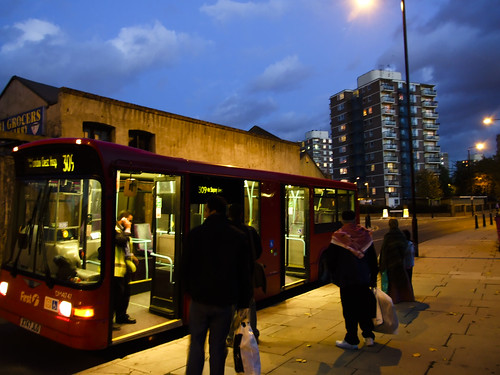
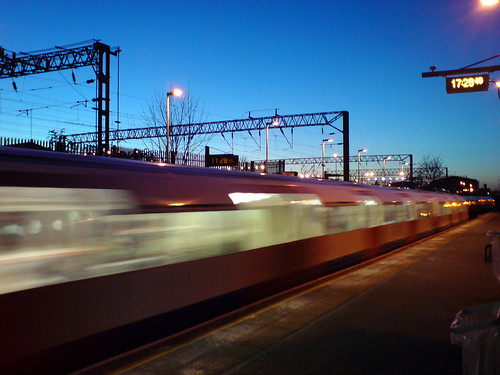
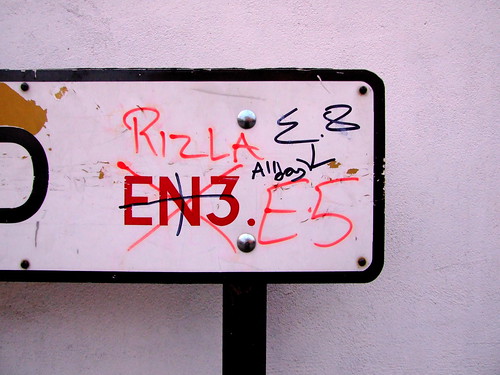
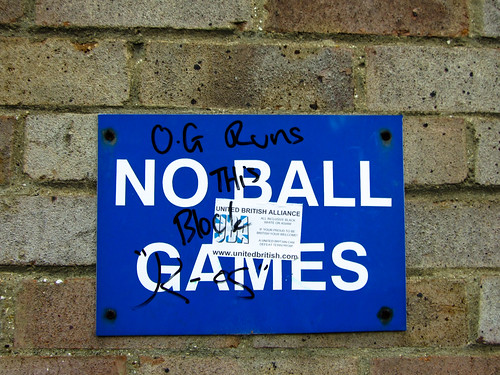
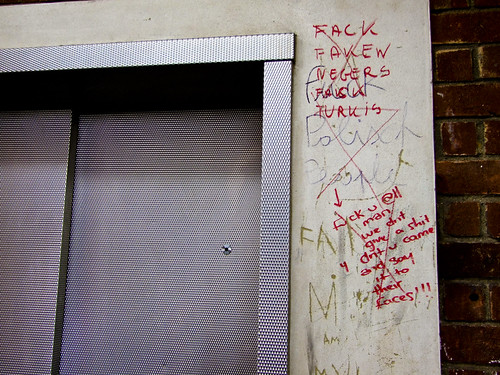

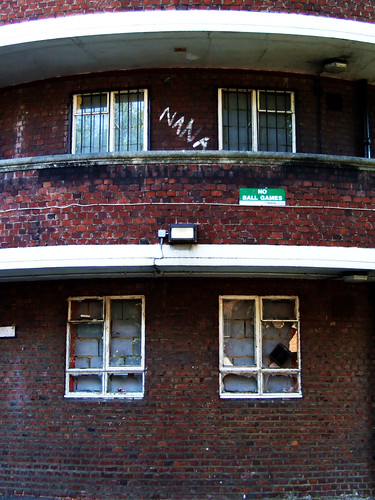
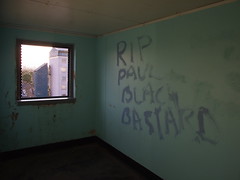
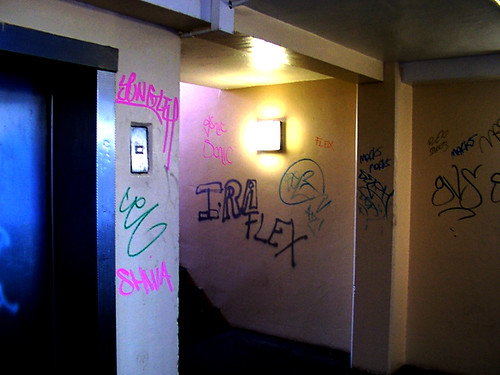
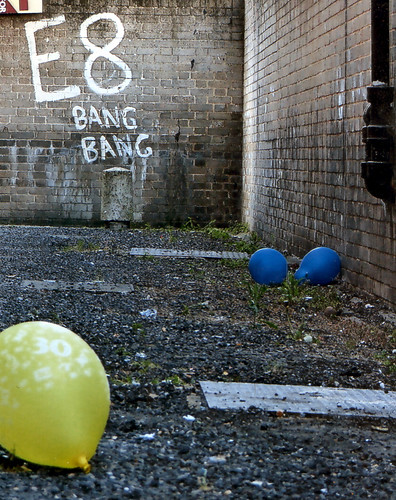
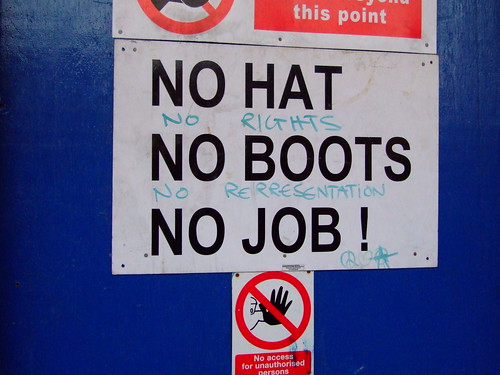
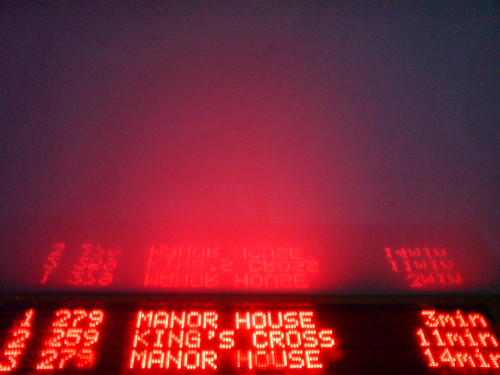
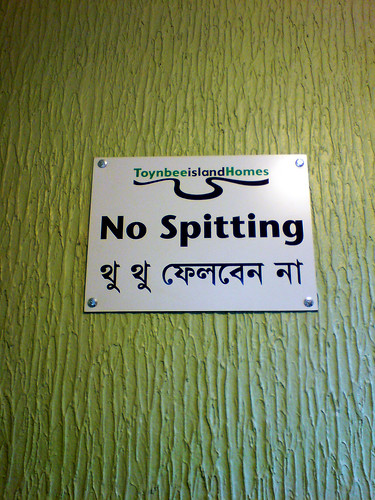
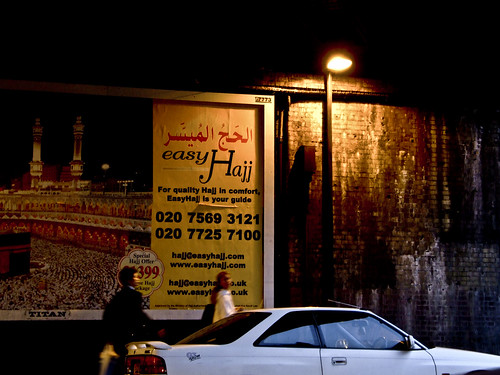
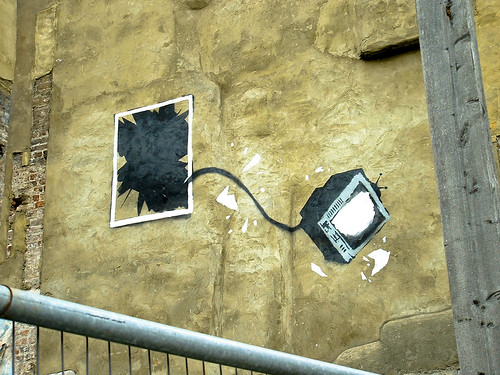
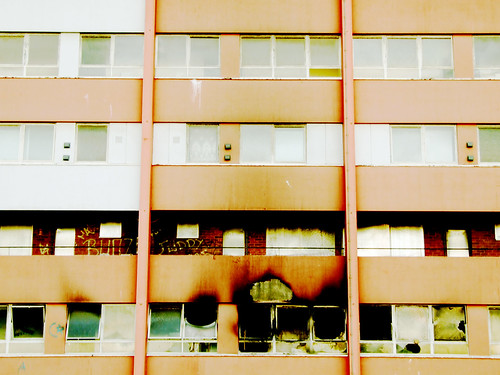
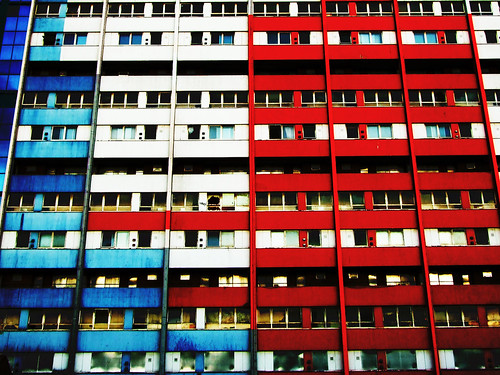
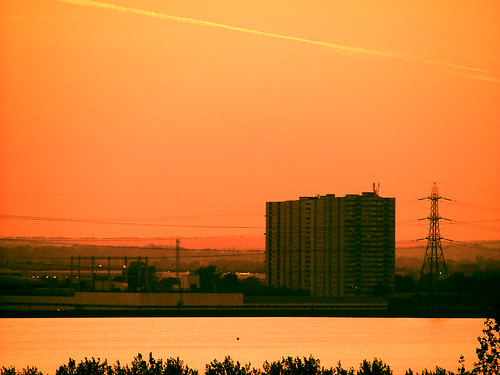
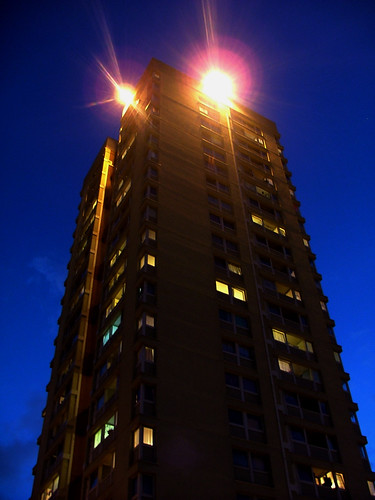

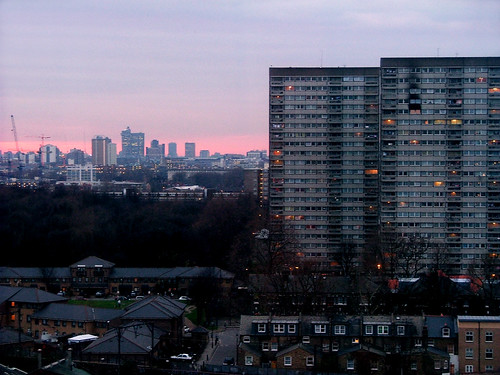
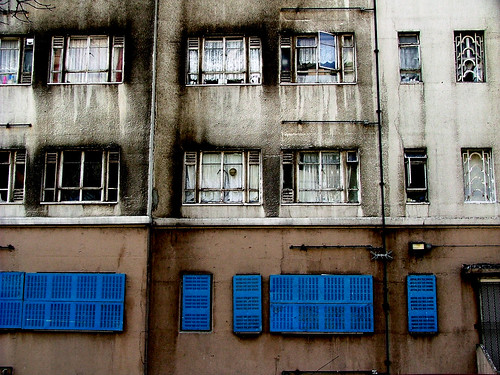

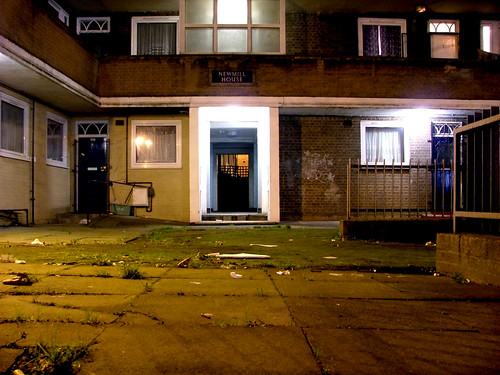
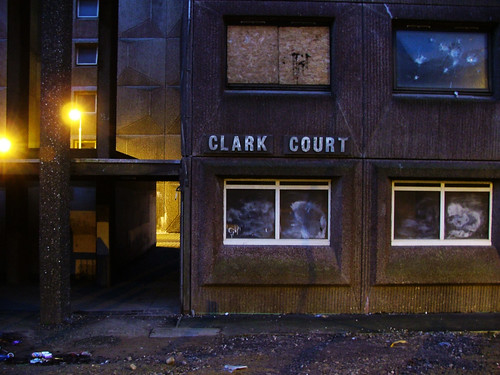
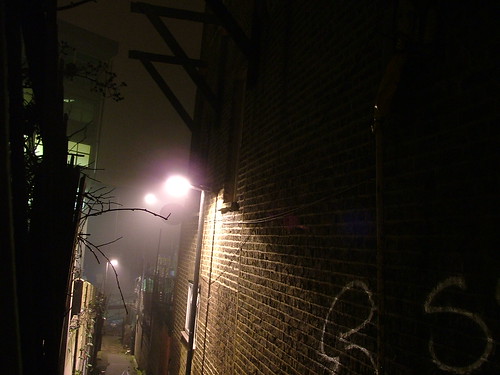
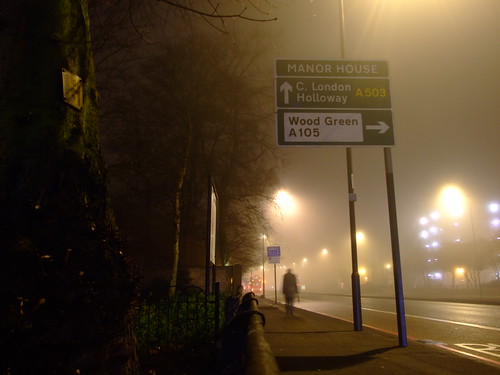

No comments:
Post a Comment